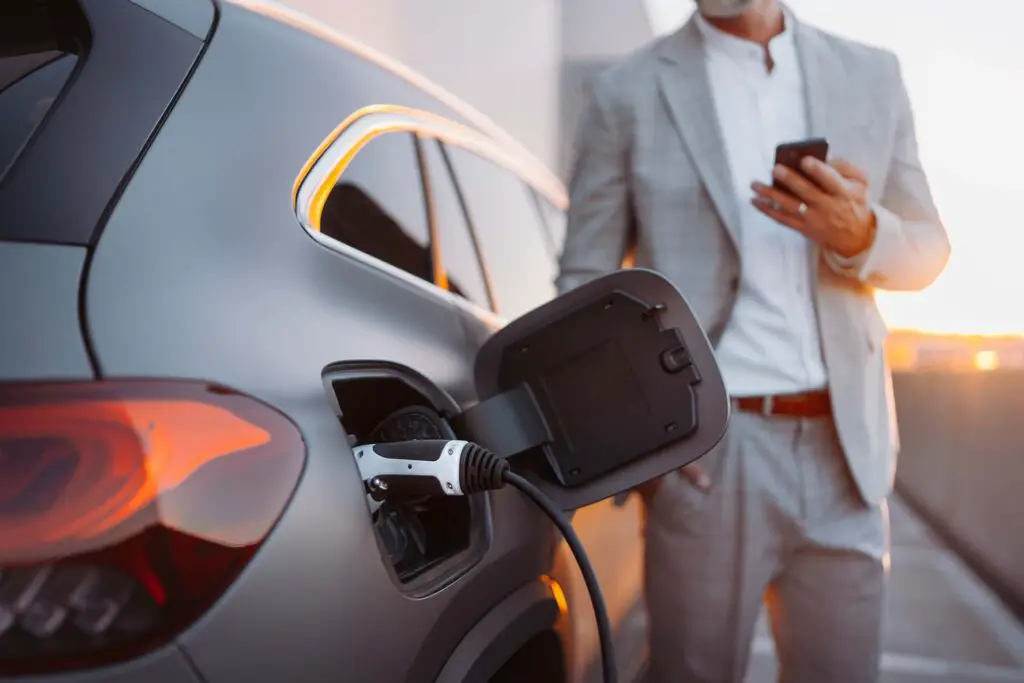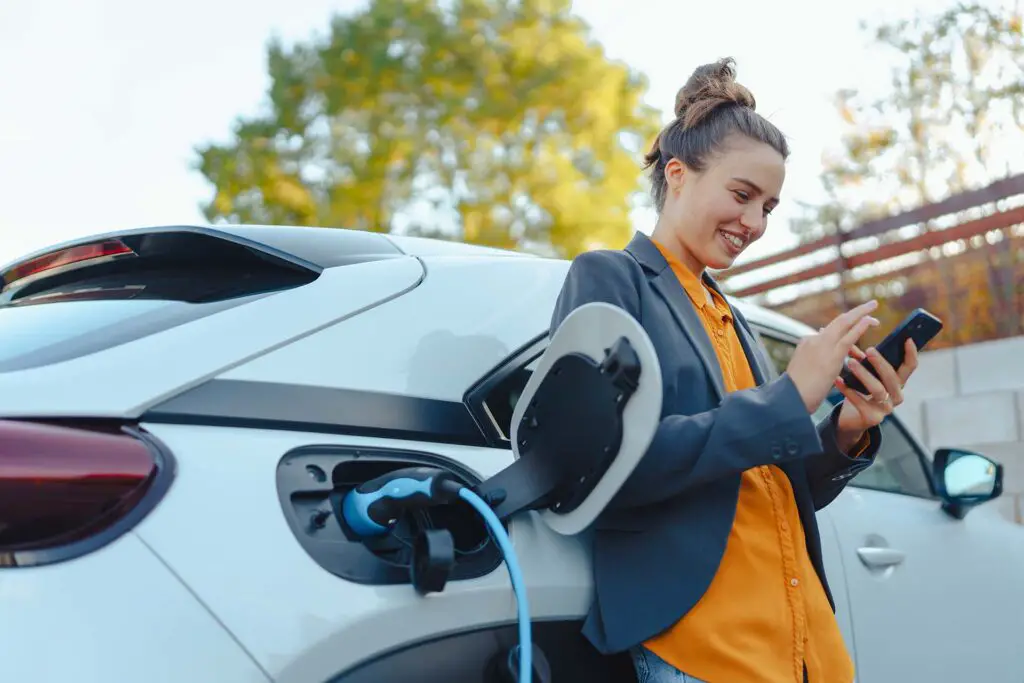If it’s too good to be true, it probably is. The same unfortunate philosophy applies to making the switch to battery-powered vehicles. There’s plenty to gush about. However, it’s important to glance at the not-so-obvious side of things and question – what are the hidden costs of owning an electric car? Let’s plug in and uncover those under-the-hood expenses that don’t always make the headlines.
What Are the Hidden Costs of Owning an Electric Car?
The hidden costs of owning an EV include the expenses related to the charging infrastructure, the battery replacement costs, and its effect on resale value. Additionally, there might be higher maintenance and repair costs due to limited service options and increased insurance premiums.
Moreover, the upfront costs are not always as advertised, with the reliance on government incentives being only a temporary relief. Each of these factors can subtly add up, making it essential for buyers to be informed before making the switch.

The Allure of Electric Cars – Plenty of People Are Making the Switch
Electric vehicles (EVs) have revved their way to popularity in recent times. For example, the global sales of battery-powered four-wheelers made up about 16% of the whole automobile market in May of 2023. About 70% of those were all-electric vehicles, and that’s definitely no small feat!
This 50% increase compared to last year’s sales is making it known that a growing number of people are catching on to the tempting benefits that EVs offer. Both for the wallet and the world. Let’s break down some of the reasons why EVs are better:
- Zero emissions,
- Energy independence,
- Sleek performance features,
- Reduced operating costs,
- Government incentives.

The Upfront Costs Are Not Always as Advertised
Diving into the EV realm might initially seem like a smooth ride, especially with all the buzz surrounding their benefits. However, the financial landscape of owning these vehicles isn’t always as straightforward or as rosy as it’s painted to be.
The Premium Purchase Price Can Put a Strain on Your Wallet
EVs, with all their tech-savvy features and green credentials, come with a high price tag. This upfront cost is one of the primary hurdles many potential buyers face. To put things into perspective, here’s the average price difference between EVs and traditional gasoline-powered cars:
| All-Electric | $67,000 |
| Plug-in Hybrid | $39,000 |
| Gas | $33,800 |
Incentives and Rebates Are Not Exactly Long-Term Solutions
Now, some might argue that government incentives and rebates level the playing field. And to an extent, they’re right. These financial perks can substantially reduce the initial sting of an EV’s higher purchase price.
However, these incentives are often temporary and designed to boost early adoption. Moreover, as more people jump on the EV bandwagon and these cars become mainstream, there’s a good chance these incentives might wane or disappear altogether.

The Charging Infrastructure Has Plenty of Hidden Time ”Costs”
When it comes to owning a battery-powered four-wheeler, it’s not a simple plug-and-play. With public charging stations not as ubiquitous as gas stations, EV owners often find themselves playing a game of planning. Constantly having to carefully map out routes and pit stops. This added layer of strategy translates to a hidden “cost” – your time.
You Need to Consider the Public Charging Rates
Unlike the standardized world of gasoline, where you’ve got a general idea of the going rate per gallon, charging an EV can be a bit like the Wild West. Unpredictable and sometimes costly. Depending on your location, the rates at public charging stations can vary widely. Some might offer competitive rates, while others could be priced at a premium, especially if they’re in high-demand areas.
Home Charging Stations – Costs of Installation and Upgrades
Sure, having a home charging station is convenient, but it’s not as simple as just buying a cable and plugging it into a socket. The whole ordeal is definitely not a productive way to cut down car expenses. Installation costs can be steep, especially if your home’s electrical system requires an upgrade to accommodate the extra load.

The Battery Replacement and Degradation Should Be Taken Into Account as Well
Electric batteries are the heart of every EV. While they’ve come a long way in terms of technology and longevity, they still have their own set of challenges. Here’s everything you should know about:
Lifespan of an Electric Car Battery
The average electric car battery is touted to last between 100,000 to 200,000 miles, which translates to roughly 15 to 20 years. It’s an impressive lifespan, considering the technology’s relatively young age. However, as with most averages, there are exceptions.
Various factors, from driving habits to the environment, can affect how often you need to replace the battery. So, while the numbers might give you comfort, you need to also accept that there’s a likelihood of needing a battery switch sometime in your EV’s life.
Replacement Costs
Taking the plunge to replace a worn-out battery is like buying a small city car – it doesn’t come cheap. Depending on the make and model of the car, a new battery can set you back anywhere from $5,000 to $15,000.
Resale Value Implications
Battery health is to EVs what engine condition is to traditional vehicles when it comes to resale value. You can have the best all-electric vehicle around. But if the battery shows signs of degradation or is nearing the end of its lifecycle, it can considerably reduce the resale value. It’s a bit of a ticking clock scenario. The closer the battery is to its expiry date, the more it might impact the potential sale price.
Then There’s the Maintenance and Repair Considerations
When it comes to maintenance and repairs, EVs are usually less fussy than their gasoline-powered counterparts. However, it’s not all sunshine and rainbows. Despite this reputation for being low-maintenance, there are still a few potential problems. Especially when things go south.
You Might Have Limited Options for Both Service Centers and Spare Parts
Even as EVs become more commonplace, finding a service center equipped and trained to handle them can still be a hurdle. This limitation can translate to longer waits for service appointments and potentially steeper repair costs. Moreover, certain parts specific to EVs may not be as readily available, making replacements a bit of a waiting game.
Certain EVs Might Not Be Covered by Standard Warranties
While many EVs, including Tesla models, come with robust manufacturer warranties, there’s a catch – not all EV-specific components are covered. Some warranties might not encompass the entire battery pack, or they might have stipulations regarding degradation levels. Therefore, it’s crucial to go over the fine print to avoid any unexpected out-of-pocket expenses down the road.

There Are Also Some Indirect Costs and Considerations
While we’ve delved deep into the tangible expenses of owning an EV, there are still some under-the-radar considerations that might just tip the balance. It’s not just about the sticker price, the charging costs, or the battery replacement. There’s a myriad of other factors that can sneak into the equation.
Battery-Powered Vehicles Might Require Insurance Premiums
It’s a common misconception that EVs, being green and all, would automatically cost less to insure. However, the truth is that most of them have higher insurance premiums. Factors such as the car’s value, repair bills, potential theft rate, and the safety features in place all play a role.
Let’s take a closer look at the average insurance price comparison:
| All-Electric | $2,280 |
| Plug-in Hybrid | $1,637 |
| Gas | $1,529 |
Depreciation Rates Might Be Lower, but They Also Need to Be Taken Into Account
Like all four-wheelers, EVs also face depreciation. While some models might hold their value better due to their brand or the tech on board, others can depreciate at a faster rate. Battery health and lifespan play a massive role in this department.
There’s Also the Environmental Impact of Battery Production and Disposal
Shifting to an EV feels like a step in the eco-friendly direction, but the road isn’t devoid of environmental hiccups. The production of electric batteries consumes a significant amount of energy and resources. Moreover, when it’s time to say goodbye, battery disposal poses plenty of challenges. Though recycling processes are improving, there’s still an environmental cost to consider as the heart of your four-wheeler is nearing its end.

It’s All About Balancing the Costs With the Benefits
The appeal of a greener planet and fewer stops at the gas station is undeniable. There are plenty of hidden expenses lurking beneath that shiny facade, some of which we’ve covered here. However, with a bit of forethought and planning, prospective buyers can make the switch a cost-effective reality:
- If you’re not installing a home charging station, map out public charging stations on your regular routes to avoid premium-priced locations,
- Shop around to find carriers that offer competitive insurance rates for EVs,
- Always be on the lookout for federal, state, or local incentives that can offset the initial purchase price,
- Just like traditional cars, keeping your EV in tip-top shape can prevent costly repairs down the line,
- The way you use and charge your EV’s battery can influence its lifespan, so make sure you learn the best practices for the model you’re considering.
Take Time to Figure Out This Electrifying Equation
In the grand tapestry of technological advances, EVs paint a promising picture. But, as with all things cutting-edge, there’s always more than meets the eye. Therefore, consider the entire lifecycle of your potential electric steed. This will help you make an informed decision. In the end, it’s all about striking the right balance between benefits and costs, ensuring the ride into the future is both sustainable and savvy.








